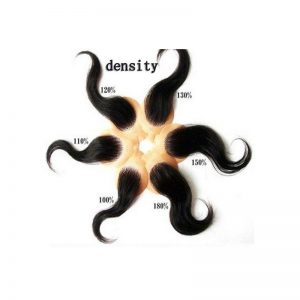
Great wigs aren’t cheap, and if you want yours to last a long time and look great you’ll need to purchase the correct density. To put it simply, density is defined as how thick or thin you want your hair to be.
- The standard density is 130% (Medium Density).
- Starting out with Light to Medium Density is a good idea for those new to wigs.
- The average human head is considered to be between 100%-120%.
WIG DENSITIES AND WHO THEY ARE SUITED TO
- The standard density is 130% (Medium Density).
- Starting out with Light to Medium Density is a good idea for those new to wigs.
- The average human head is considered to be between 100%-120%.
- 100% -110% = Light Density.
- Those with fine or thin hair can use this density to mimic their natural texture.
- 120%- 130% = Medium Density.
- This is a realistic and natural looking density and the most popular choice.
- Not too thick or too thin.
- Hairline will have a lighter density and transition to a thicker density.
- 150% = Medium to Heavy Density.
- For those who want a natural look but with added fullness.
- Has lots of bounce, body and movement.
- 180% = Heavy Density.
- For clients who want a full and voluminous look.
- 200% = Extra heavy/Super Glam.
- This is very heavy and provides a glam look.
- For those who want to mimic celebrity hairstyles.
WIG DENSITIES AND WHO THEY ARE SUITED TO
- 12-14 inches – 120%-130%
- 16-20 inches – 150%
- 22-24 inches – 180%
- 26-30 inches – 200%+
OTHER THINGS THAT SHOULD DETERMINE DENSITY
- Your natural hair density.
- Your age (the older you are, the lighter density needed).
- The texture of wigs that you prefer.
- Your personal preferences.
MAKING VARIOUS DENSITIES SUIT YOUR HAIR
- Hair should be layered for a high density wig to look its best – this way, hair will look less square and more realistic.
- Make a low density wig look more full by giving it a blunt cut.